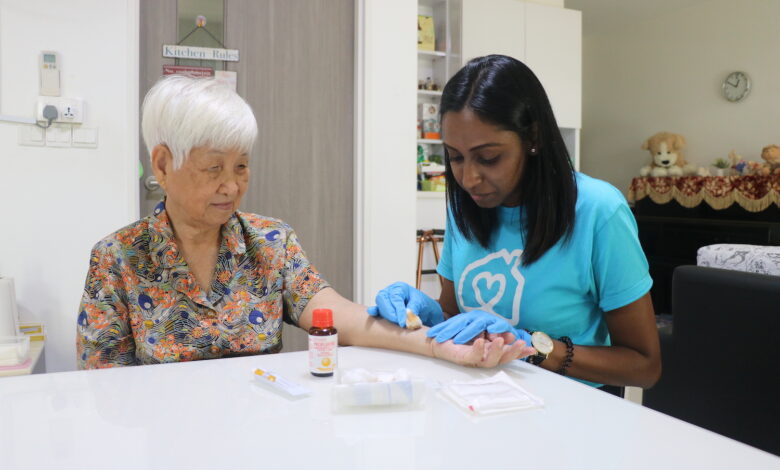The Ultimate Guide to Cure Wounds: Everything You Need to Know

Wounds are an inevitable part of life, whether they result from a small cut while cooking, a scrape from a fall, or a more serious injury. Proper wound care speeds healing, prevents infections, and reduces scarring.
Read on to learn some tips on how to cure wounds.
Disinfect the Wound
The first step to cure wounds is to disinfect it. This means cleaning the area thoroughly with an antiseptic solution or soap and water. Disinfecting removes any dirt, debris, or bacteria that may be present on the wound, reducing the risk of infection.
Many disinfectants are available, such as hydrogen peroxide, rubbing alcohol, and iodine. It is important to choose one that is safe for use on wounds and follow the instructions carefully. Healthcare providers may also recommend using sterile saline solution for wound cleansing.
Apply Antibiotic Ointment
After cleaning and drying the wound, apply antibiotic ointment. It can help prevent infection and promote healing. These ointments contain ingredients that kill bacteria and create a protective barrier over the wound.
Be sure to use a clean applicator, such as a cotton swab or sterile gauze, to apply the ointment and avoid touching it with your fingers. Treating diabetic wounds, for example, requires special attention to avoid further complications. This may include using a specific type of antibiotic ointment or seeking medical guidance.
Cover the Wound
Covering the wound with a sterile bandage or gauze helps keep it clean and protected from outside bacteria. It also absorbs any excess moisture, which can promote healing. Make sure to change the bandage daily or more frequently if it becomes wet or soiled.
For larger wounds, a non-stick gauze pad can be placed first before wrapping with a bandage. This prevents the bandage from sticking to the wound and causing further damage during removal.
Patients with diabetes or compromised immune systems are at a higher risk of developing infections from wounds. It is important to seek medical advice before treating and covering wounds. This allows for proper assessment and treatment, reducing the risk of complications.
Monitor for Signs of Infection
Even with proper care, wounds can still become infected. It is important to monitor the wound daily for any signs of infection such as redness, swelling, warmth, or drainage.
If these symptoms appear, seek medical help right away. It may prevent the infection from spreading.
Diabetic wounds are prone to infections. High blood sugar impairs the body’s ability to fight bacteria. So, diabetic patients must watch their wounds. They should get medical help at the first sign of infection.
A diabetic neuropathy cream can protect against neuropathic pain. It can also prevent further complications. This is especially beneficial for diabetic patients with wounds on their feet, as they may not feel pain or discomfort due to nerve damage.
Allow for Adequate Healing
Proper wound care involves giving the wound enough time to heal. This may mean avoiding activities that could irritate or reopen the wound, such as swimming or excessive exercise. It is also important to keep the wound clean and dry and avoid picking at scabs or removing bandages prematurely.
If a wound does not heal in a week or gets more painful, seek medical help. This is especially important for deep or large wounds, as they may require stitches or other medical interventions.
Seek Professional Help When Necessary
In some cases, wounds may require professional medical intervention. If a wound is deep, large, or has debris embedded in it, it’s important to seek immediate medical attention.
Healthcare providers can assess the wound’s severity. They can then decide if stitches, staples, or other treatments are needed. Also, if a wound worsens after a week, it may be a serious infection. A foul odor is another sign. This requires antibiotics or other treatments.
Patients with chronic conditions, like diabetes, should get regular check-ups. They should monitor their wounds for any issues. These individuals may have specific needs.
They may benefit from tailored treatment plans to ensure their wounds heal properly and quickly. Prioritizing wound care and seeking advice when in doubt can improve outcomes and reduce complications.
Educate Yourself About Wound Care
Understanding the principles of wound care is essential for effective management. Knowing the types of wounds, like abrasions, lacerations, and punctures, helps in giving the right care.
Different wounds may need different treatments. Knowing this can help you respond effectively.
Also, following the latest guidelines from trusted medical sources will improve your wound management skills. Workshops or first aid courses can cure wounds. They teach skills for managing wounds in various scenarios.
Maintain a Healthy Lifestyle
A healthy lifestyle supports wound healing from the inside out. Eating a balanced diet rich in vitamins and minerals, particularly vitamins A, C, E, and zinc, can aid in tissue repair and regeneration.
Staying hydrated is equally important. Fluids help skin elasticity and healing.
It’s also beneficial to avoid smoking and limit alcohol consumption, as these can impair blood flow and slow down healing times. Regular exercise, as allowed by doctors, can boost circulation and speed healing.
Be Aware of Nutritional Needs
Focusing on nutritional needs is crucial for optimal wound healing. Protein is vital for building and repairing tissues. So, include enough protein in your diet. Good sources are lean meats, poultry, fish, legumes, and dairy.
A mix of fruits and vegetables can provide antioxidants. They fight inflammation and aid healing.
It’s important to consider specific dietary requirements, especially for those with conditions like diabetes, where blood sugar levels must be managed carefully while ensuring adequate nutrient intake.
Consulting with a registered dietitian can help to cure wounds, providing tailored nutrition guidance to aid in the healing process.
Consider Advanced Wound Care Options
In some cases, traditional methods to cure wounds may not be sufficient to promote healing, and advanced treatment options may be required. This can include the use of hydrocolloid dressings, alginate dressings, or biological therapies such as skin grafts or growth factors.
These options can provide a moist wound environment, support tissue regeneration, and reduce the risk of infection. For chronic wounds that do not respond to standard interventions, consulting a wound care specialist may be beneficial.
Learning How to Cure Wounds
Proper wound care is essential to promote healing and prevent complications. In some cases, advanced wound care options may be necessary to cure wounds. It’s crucial to consult with healthcare professionals when in doubt and to prioritize personal health through proper nutrition and a healthy lifestyle.
If you enjoyed this article and would like to read more like it, please check out the rest of our blog today.



